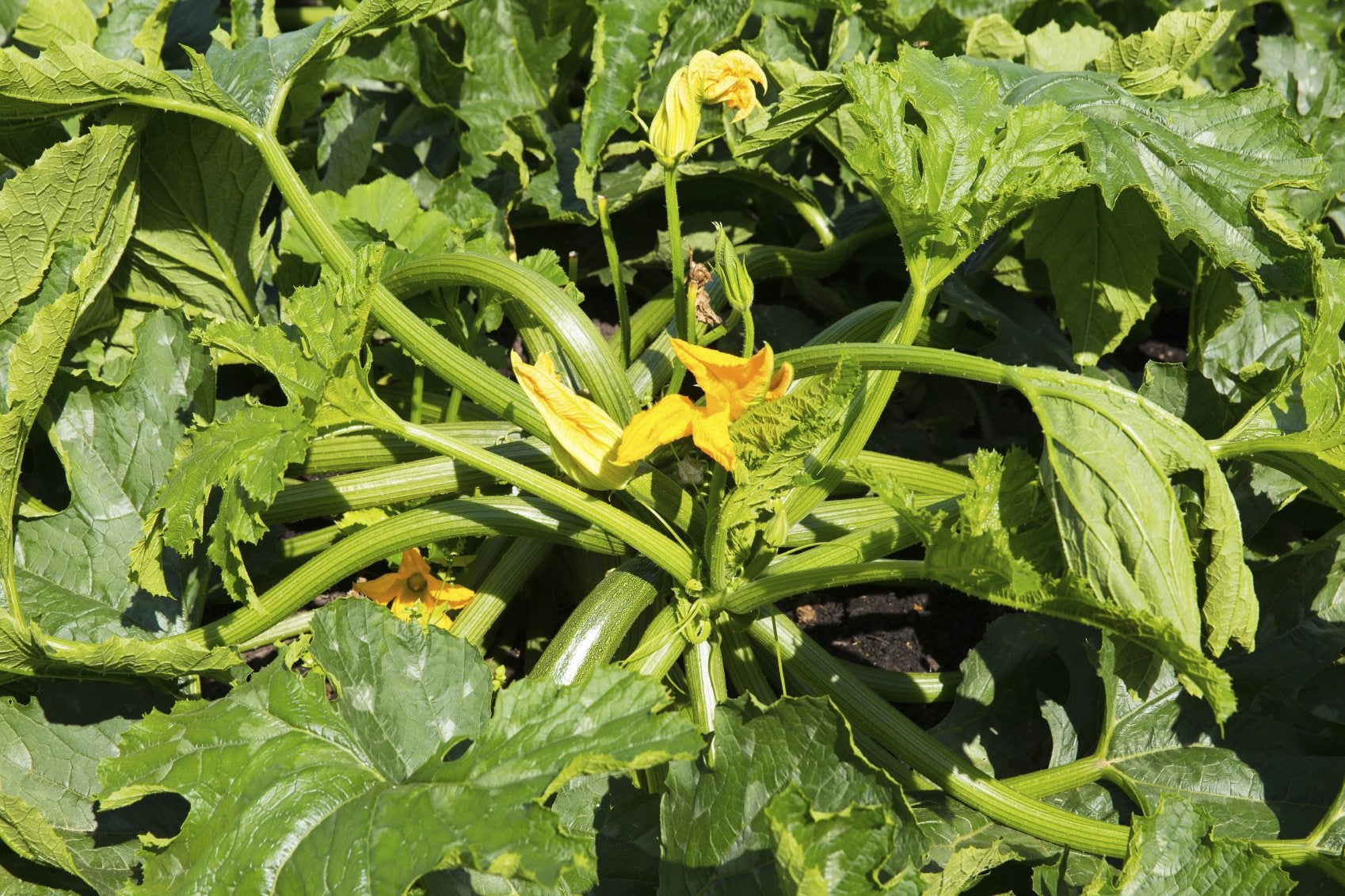In the world of horticulture, the question of whether zucchini plants have a natural tendency to recline remains a subject of vibrant debate. While some argue that the lateral growth of these plants naturally causes them to sprawl, others propose that external factors, such as inadequate support or overcrowding, may be responsible for their prostrate posture. This article aims to explore the intriguing query—”Do zucchini plants lay down?”—and shed light on the mechanisms behind their peculiar plant behavior. By delving into the complex interplay of genetics, environmental factors, and horticultural practices, we seek to uncover the truth behind the prostration of these fascinating plants.
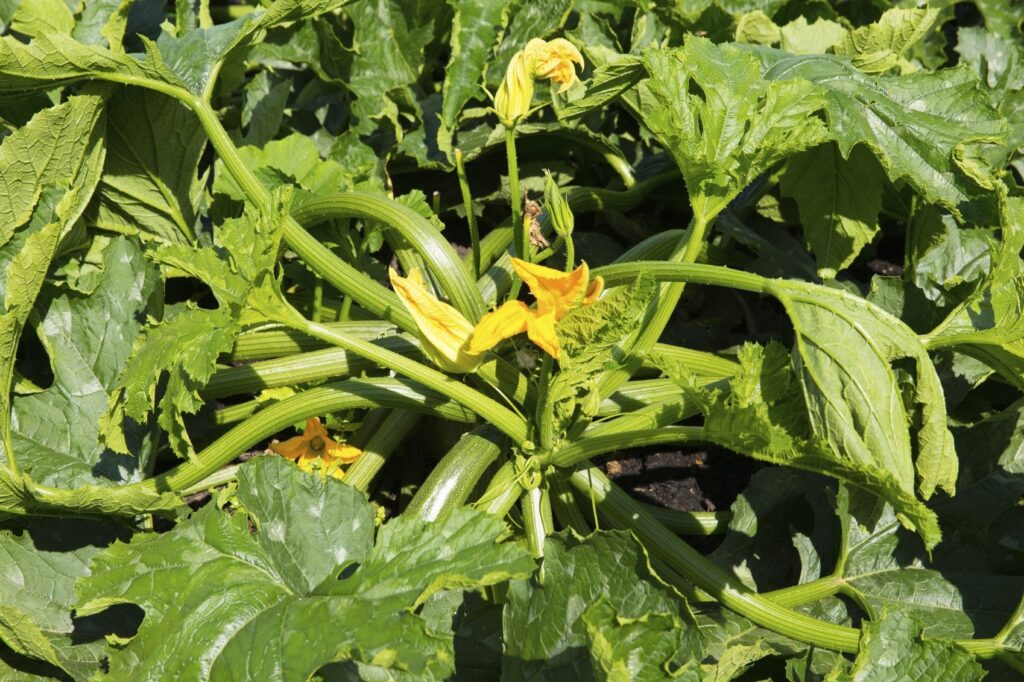
Understanding Zucchini Plants
What are zucchini plants?
Zucchini plants, scientifically known as Cucurbita pepo, are a type of summer squash that belong to the Cucurbitaceae family. They are herbaceous annual plants that originate from Central America and are widely cultivated around the world for their edible fruits. Zucchini plants produce long, cylindrical fruits with a smooth skin and mild flavor, making them a popular choice in culinary preparations.
Basic characteristics of zucchini plants
Zucchini plants have a bushy growth habit, with a compact and relatively short stature compared to other members of the Cucurbitaceae family. They typically reach a height of 2 to 3 feet, spreading out horizontally with a diameter of 3 to 4 feet. The stems of zucchini plants are hollow and slightly ribbed, providing structural support to the entire plant. The leaves are large, alternate in arrangement, and have a dark green color with prominent veins. Zucchini plants have a taproot system, consisting of a main vertical root with lateral branches that spread out horizontally in search of water and nutrients.
Growth habits of zucchini plants
Zucchini plants are fast-growing and have a relatively short lifespan. They are considered a warm-season crop, requiring a frost-free period of approximately 70 to 100 days to complete their life cycle. Zucchini plants thrive in full sun, preferring well-drained soil with a pH range of 6 to 7.5. They have a high demand for water and nutrients, requiring regular irrigation and proper fertilization to support their growth. These plants also benefit from a consistent temperature range of 70 to 90 degrees Fahrenheit, as extreme temperatures can negatively affect their development.
Zucchini Plant Physiology
Stem structure of zucchini plants
The stem of a zucchini plant plays a crucial role in providing support, transporting water, nutrients, and sugars, and facilitating overall plant growth. The stem is composed of elongated cells with both primary and secondary growth. The primary growth occurs at the tips of the stem, allowing for upward growth, while secondary growth contributes to the thickening of the stem. Zucchini plant stems have a hollow center, which aids in the circulation of water and nutrients. They also possess slight ribbing, enhancing the structural integrity of the plant.
Leaf arrangement of zucchini plants
Zucchini plants exhibit an alternate leaf arrangement along their stems. The leaves are large, broad, and deeply lobed, helping to maximize photosynthetic surface area. This arrangement enables efficient light absorption and conversion of sunlight into chemical energy through the process of photosynthesis. The leaves are attached to the stem by petioles, which allow for flexibility and movement to optimize exposure to sunlight. The dark green color of the leaves is primarily attributed to chlorophyll pigments, which are vital for capturing light energy.
Root system of zucchini plants
The root system of zucchini plants consists of a taproot, which serves as the primary anchor and nutrient absorber. From the taproot, lateral branches, known as secondary roots, develop and spread horizontally in the soil. These lateral roots extend their reach to maximize water and nutrient uptake from the surrounding soil. The fine root hairs, located at the tips of the secondary roots, significantly increase the surface area available for absorbing water and essential minerals. The root system of zucchini plants is essential for providing stability, nutrient acquisition, and water uptake, thereby supporting overall plant health and growth.
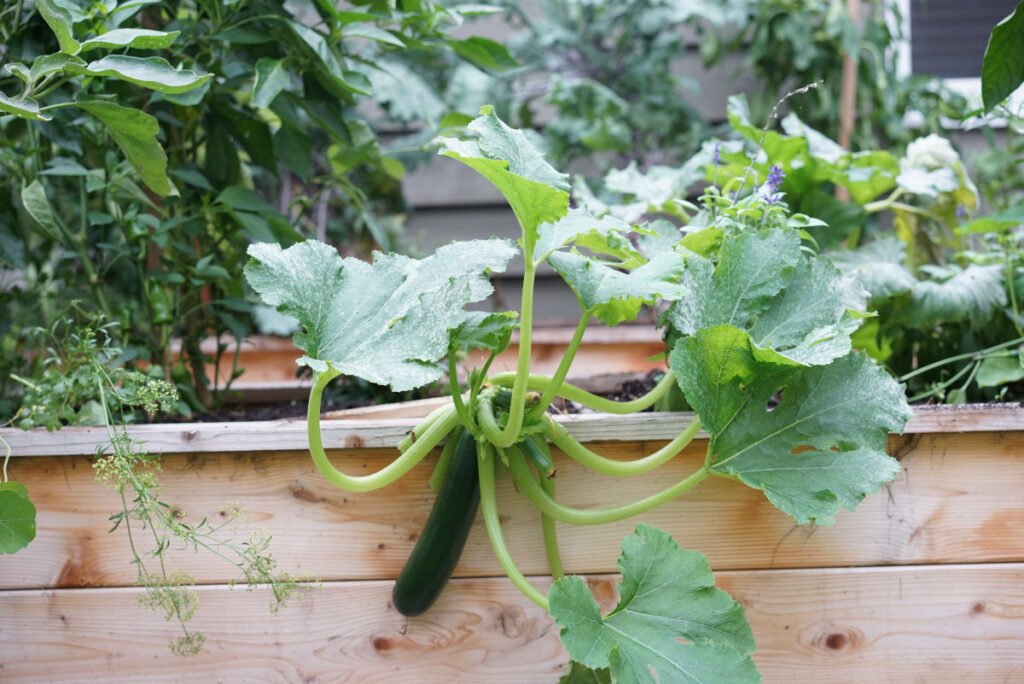
Plant Positioning and Orientation
Natural growth orientation of zucchini plants
In their natural growth state, zucchini plants exhibit an upright or semi-upright orientation. The main stem grows vertically from the ground, with lateral branches extending horizontally. This orientation allows for optimal exposure to sunlight, facilitating efficient photosynthesis and overall plant growth. The upward growth of the plant also aids in reducing the risk of diseases, as it promotes better air circulation around the foliage. Additionally, the vertical growth pattern helps to conserve space, making zucchini plants suitable for gardens with limited area.
Factors influencing plant positioning
Several factors influence the positioning of zucchini plants. The primary factor is the availability of sunlight. Zucchini plants require a minimum of 6 to 8 hours of direct sunlight per day for optimal growth. Insufficient sunlight exposure can result in weak, leggy growth and reduced fruit production. Another factor is the presence of physical barriers or neighboring plants that may obstruct the natural growth orientation of the zucchini plant. Lack of space or overcrowding can also affect the positioning of the plant, impeding its ability to grow and develop properly.
Benefits of proper plant orientation
Proper plant orientation holds various benefits for zucchini plants. An upright or semi-upright growth allows for efficient light capture, enabling the plants to produce an abundant amount of chlorophyll and maximize photosynthesis. This, in turn, promotes healthy leaf development and overall plant vigor. Additionally, an upright orientation enhances air circulation around the foliage, decreasing the likelihood of fungal diseases. The vertical growth habit also aids in maintaining a compact plant structure, making it easier to manage and harvest the fruits.
Effects of incorrect plant positioning
Incorrect plant positioning can have detrimental effects on the growth and development of zucchini plants. Insufficient sunlight exposure due to shading or improper orientation can lead to reduced photosynthesis rates and decreased overall plant productivity. The plant may become weak and leggy as it stretches towards the available light source. Additionally, poor air circulation caused by incorrect plant positioning can create a favorable environment for the growth of fungal pathogens, increasing the risk of diseases. Misaligned growth can also result in overcrowding, limiting the space available for the roots to expand and acquire water and nutrients, further compromising plant health.
Plant Growth and Development
Stages of zucchini plant growth
The growth of zucchini plants can be divided into several distinct stages. The first stage is germination, in which the seed absorbs water and begins to sprout. Next, the seedling stage occurs as the young plant develops its first true leaves and establishes its root system. The vegetative stage follows, during which the plant focuses on leaf and stem growth. Zucchini plants then enter the reproductive phase, which is characterized by the development of flowers and fruit. The final stage is senescence, where the plant gradually declines and eventually dies. Each stage requires specific environmental conditions, nutrients, and management practices to support optimal growth and development.
Key factors affecting plant growth
Several key factors influence the growth of zucchini plants. One crucial factor is light availability and quality. Zucchini plants require sufficient sunlight for photosynthesis and energy production. The quality of light, including its intensity and spectrum, affects various physiological processes, such as flowering and fruit development. Another vital factor is water availability. Zucchini plants have a high demand for water, particularly during the vegetative and reproductive phases. Insufficient watering can lead to stunted growth and reduced fruit production. Nutrient availability, soil quality, temperature, and pest and disease pressures also impact the growth and development of zucchini plants.
Reproductive phase of zucchini plants
The reproductive phase of zucchini plants occurs after the vegetative stage, marked by the formation of flowers and subsequent fruit development. Zucchini plants produce separate male and female flowers on the same plant. The male flowers typically appear first and play a vital role in pollination. The male flowers have long, slender stalks and produce pollen, while the female flowers have a small fruit attached at the base of the flower. Pollination, usually performed by bees and other pollinators, is necessary for fertilization and fruit set. After successful pollination, the fruit develops and matures, ready for harvest.
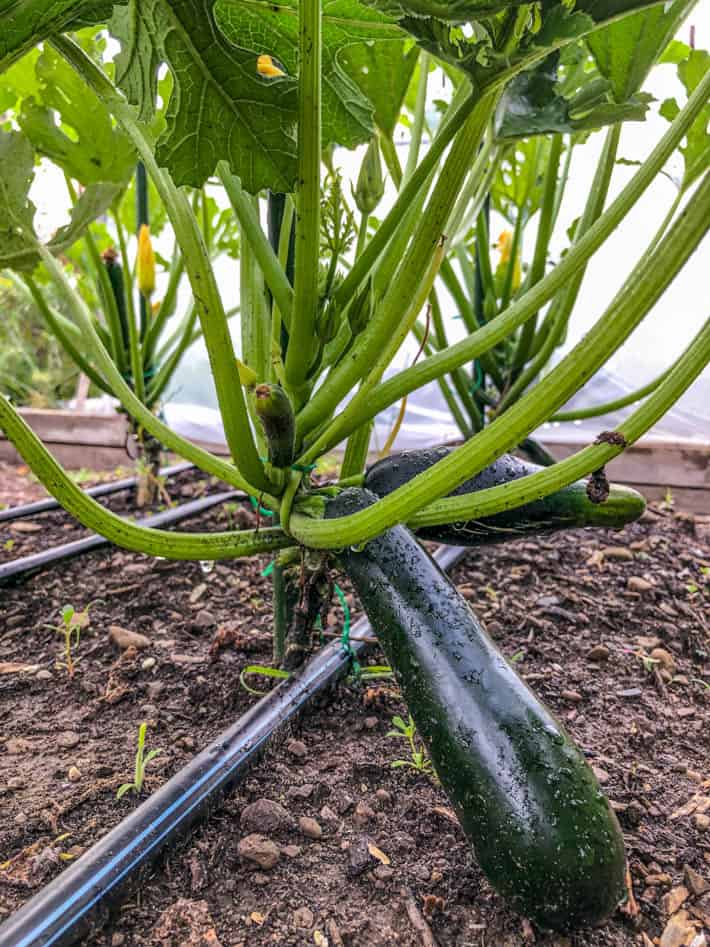
Plant Responses to Environmental Conditions
Tropism in zucchini plants
Tropism refers to the directional growth movement of plants in response to external stimuli. Zucchini plants exhibit several tropic responses, wherein they adjust their growth pattern to optimize their position relative to specific environmental factors. The two main types of tropism commonly observed in zucchini plants are phototropism and geotropism.
Phototropism and plant bending
Phototropism is a tropism that describes the growth response of plants towards or away from a light source. In the case of zucchini plants, they exhibit positive phototropism, where the stems bend and grow towards the direction of a light source. This adaptive response allows the plants to position their leaves optimally for capturing sunlight, promoting photosynthesis and overall plant growth. Insufficient light or uneven light exposure can result in uneven bending or irregular growth patterns of zucchini plants.
Geotropism and plant root orientation
Geotropism, also known as gravitropism, is a tropism that refers to the growth response of plants towards or away from the force of gravity. In zucchini plants, the roots exhibit positive geotropism, growing downwards towards gravity. This orientation allows the roots to anchor the plant securely in the soil, while also facilitating water and nutrient absorption from the surrounding environment. In contrast, the shoots of zucchini plants exhibit negative geotropism, growing upwards away from the force of gravity towards the source of light for efficient photosynthesis.
Zucchini Plant Support Techniques
Staking or trellising zucchini plants
Staking or trellising zucchini plants involves providing vertical support structures to guide the plants’ growth and prevent them from sprawling on the ground. This technique is particularly beneficial for gardeners with limited space or for those who prefer to encourage upward growth. Stakes or trellises can be placed near zucchini plants, and the main stem or lateral branches can be tied to the support system using garden twine or soft ties. This method helps to maintain proper positioning, minimize disease risks, and facilitate easy access for watering, weeding, and harvesting.
Using cages for zucchini plants
Using cages is another effective method to provide support for zucchini plants. Cages consist of a wire or metal framework that surrounds the plant and acts as a sturdy support structure. As zucchini plants grow, their stems and branches can be gently guided and encouraged to grow within the cage. This technique enables the plants to stay upright and reduces the risk of damage from wind or heavy fruit. Cages also assist in proper plant orientation, allowing for better air circulation and light penetration, resulting in healthier plants and improved yields.
Benefits and drawbacks of plant support
Providing support to zucchini plants offers several benefits. It promotes proper plant orientation, maximizing sunlight exposure, and facilitating efficient photosynthesis. Plant support systems also help prevent the plants from sprawling on the ground, reducing the risk of diseases caused by soil-borne pathogens. Elevated plant positioning improves air circulation around the foliage, reducing the likelihood of fungal infections. Additionally, supporting zucchini plants allows for ease of access during maintenance tasks such as watering, fertilizing, and harvesting.
However, there are also some drawbacks associated with plant support. Depending on the technique used, the initial setup and installation of staking, trellising, or cages can require additional time and resources. The support structures themselves may limit the growth and natural spread of the zucchini plants, potentially reducing the overall yield. Care must be taken to avoid damaging the stems or branches during training or tying to the support system. Moreover, some zucchini varieties may have relatively weak stems, making them prone to breakage if not properly supported.
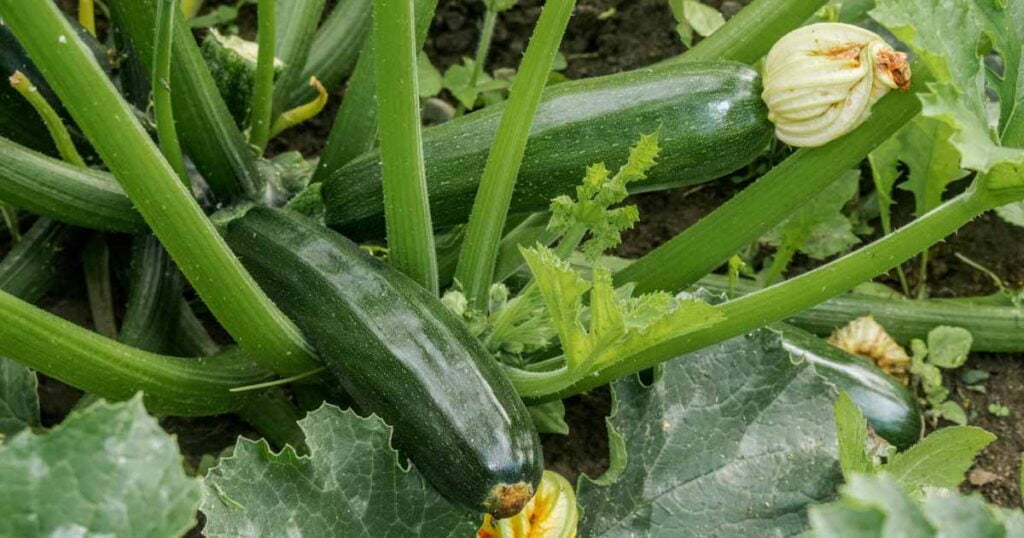
Common Incorrect Plant Positions
Zucchini plant drooping
Drooping is a common incorrect plant position observed in zucchini plants. This is characterized by the wilting or downward bending of the stems and leaves. Drooping can be caused by various factors, including environmental stressors, water-related issues, nutrient deficiencies, pest or disease infestations, and extreme temperature conditions. Prompt identification and understanding the underlying causes are crucial for implementing appropriate corrective measures to revive and restore the health of drooping zucchini plants.
Zucchini plant leaning
Leaning is another form of incorrect plant positioning that can occur in zucchini plants. This is characterized by the inclination of the main stem or lateral branches towards one side, resulting in an uneven or skewed plant structure. Leaning can be attributed to factors such as inadequate sunlight exposure, improper support systems, or damage caused by wind or other external forces. Addressing the underlying causes of leaning is essential to prevent further imbalance and ensure proper growth and development of zucchini plants.
Zucchini plant sprawl
Sprawl refers to the uncontrolled and widespread growth of zucchini plants, where they extend and spread excessively on the ground. This incorrect plant positioning hinders plant health and overall productivity. Sprawling zucchini plants are more susceptible to soil-borne diseases, pests, and damage caused by physical contact with the ground. Managing sprawl through appropriate support techniques, such as staking or trellising, can help overcome this issue and promote healthier growth patterns in zucchini plants.
Causes of Zucchini Plant Drooping
Lack of water
One of the primary causes of drooping in zucchini plants is a lack of water. Insufficient moisture in the soil can lead to dehydration, causing the plant’s cells to lose turgor pressure and wilt. Without proper hydration, zucchini plants are unable to maintain their structural integrity, resulting in drooping stems and leaves. Regular and adequate watering is crucial to ensure a well-hydrated plant, especially during periods of high temperature or dry weather conditions.
Nutrient deficiencies
Zucchini plants require a balanced supply of essential nutrients for healthy growth. Deficiencies in macronutrients such as nitrogen (N), phosphorus (P), and potassium (K), as well as micronutrients like iron (Fe), magnesium (Mg), and calcium (Ca), can contribute to plant drooping. These nutrients play crucial roles in various physiological processes, including maintaining cell turgidity, supporting metabolic functions, and promoting overall plant vigor. Soil testing and appropriate fertilization are essential to address nutrient deficiencies and prevent drooping in zucchini plants.
Pest or disease infestation
Pests and diseases can have a detrimental impact on the health of zucchini plants, potentially leading to drooping. Insect pests such as aphids, squash bugs, or vine borers can damage the plant’s tissues and disrupt normal physiological processes. Fungal or bacterial diseases, such as powdery mildew or bacterial wilt, can also cause plant wilting and subsequent drooping. Integrated pest management strategies, regular monitoring, and timely intervention are crucial for effectively managing pests and diseases to prevent drooping in zucchini plants.
Heat stress
Zucchini plants are sensitive to extreme temperatures, particularly heat stress. High temperatures can accelerate the rate of water loss through transpiration, leading to rapid dehydration and subsequent drooping. Heat stress can also negatively impact the plant’s metabolic processes and overall physiological functions. Implementing measures to mitigate heat stress, such as providing shade, mulching, or adjusting irrigation practices, can help prevent drooping and maintain the health of zucchini plants.
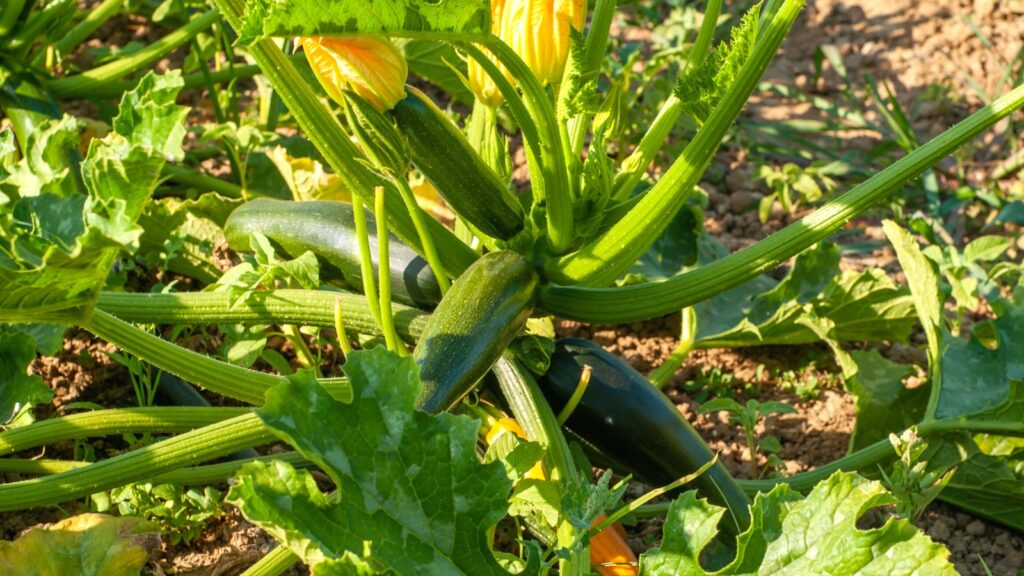
Factors Leading to Zucchini Plant Leaning
Inadequate sunlight
Insufficient sunlight exposure is a common factor leading to leaning in zucchini plants. When not receiving the recommended 6 to 8 hours of direct sunlight per day, zucchini plants tend to stretch and lean towards the available light source. This leaning is an adaptive response to maximize light absorption and maintain photosynthetic efficiency. Ensuring proper plant positioning in locations with ample sunlight is essential to prevent leaning and promote optimal growth and development of zucchini plants.
Improper support
When zucchini plants are inadequately supported, they may lean or bend under the weight of their leaves, stems, and fruit. Weak or improper support systems, such as undersized stakes, insecure trellises, or insufficient cages, are often unable to withstand the plant’s weight and growth. Regular monitoring and reinforcing the support structures are necessary to ensure stability and prevent leaning. Regular tying or training of the plant to the support system can also help maintain an upright orientation.
Wind damage
Strong winds can cause physical damage to zucchini plants, leading to leaning. Wind gusts can uproot or dislodge the plant from the ground, weaken the stems, or break branches. When exposed to continuous or gusty winds, zucchini plants may lean or bend under the force, resulting in an uneven growth pattern. Planting zucchini plants in sheltered areas, installing windbreaks or barriers, and providing additional support during periods of high winds can help mitigate wind damage and prevent leaning.
Managing Zucchini Plant Growth and Positioning
Proper watering and nutrient management
Maintaining proper watering practices is crucial for managing zucchini plant growth and positioning. Providing consistent moisture, avoiding both over- and under-watering, helps ensure optimal hydration and prevent drooping or wilting. Regular monitoring of soil moisture levels and adjusting irrigation schedules accordingly is essential. Moreover, proper nutrient management, including soil testing, appropriate fertilization, and foliar feeding, addresses any deficiencies or imbalances, promoting vigorous growth and structural integrity in zucchini plants.
Pest and disease control
Implementing effective pest and disease control measures is critical for managing zucchini plant growth and positioning. Regular scouting and monitoring help detect any signs of pest infestations or disease development early on. Integrated pest management strategies, including cultural, biological, and chemical control methods, can be employed to manage pests effectively. Similarly, appropriate sanitation practices, such as removing infected plant parts, improving air circulation, and using fungicides or bactericides, aid in controlling and preventing diseases. By mitigating pest and disease pressures, plant health and proper positioning can be maintained.
Providing suitable support
Proper plant support techniques, such as staking, trellising, or using cages, are valuable for managing zucchini plant growth and positioning. By guiding the plants’ growth and preventing sprawling, these techniques promote upright and compact growth, facilitating optimal sunlight exposure and air circulation. When selecting support systems, it is essential to consider the specific needs and growth habits of zucchini plants. Regular maintenance, including tying or training, inspecting the condition of the support system, and making necessary adjustments, ensures stability and proper orientation throughout the plant’s growth stages.
Pruning zucchini plants
Pruning zucchini plants can be an effective management practice to control growth, improve air circulation, and maintain proper positioning. Pruning involves the selective removal of unwanted or excessive plant parts, including lateral branches, suckers, or leaves. Proper pruning promotes compact growth and minimizes overcrowding, reducing the risk of diseases and pests. It also enhances sunlight penetration, facilitating even distribution of energy for photosynthesis. Pruning should be performed during the appropriate growth stages and with proper sterilization to prevent the spread of diseases.
In conclusion, understanding the physiology, growth habits, and responses of zucchini plants to environmental conditions is crucial for successfully managing their growth and positioning. By providing suitable support, implementing appropriate watering and nutrient management practices, controlling pests and diseases, and ensuring optimal environmental conditions, zucchini plants can thrive and produce abundant yields. Proper care and attention to plant growth and positioning foster healthy and productive zucchini plants, allowing gardeners to enjoy the flavorful fruits of their labor.
